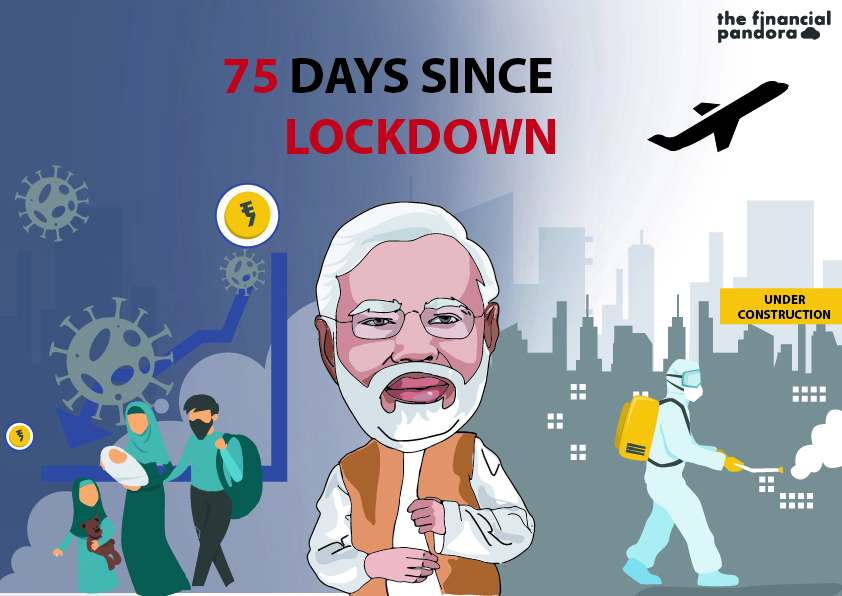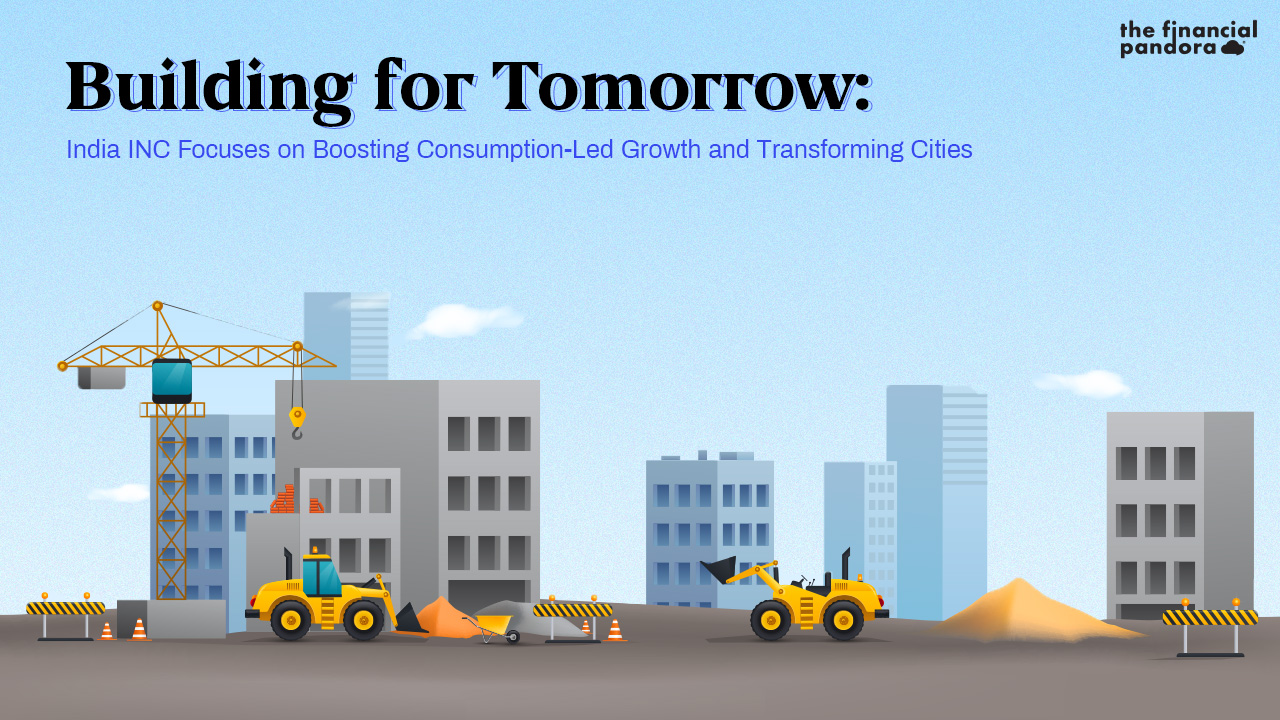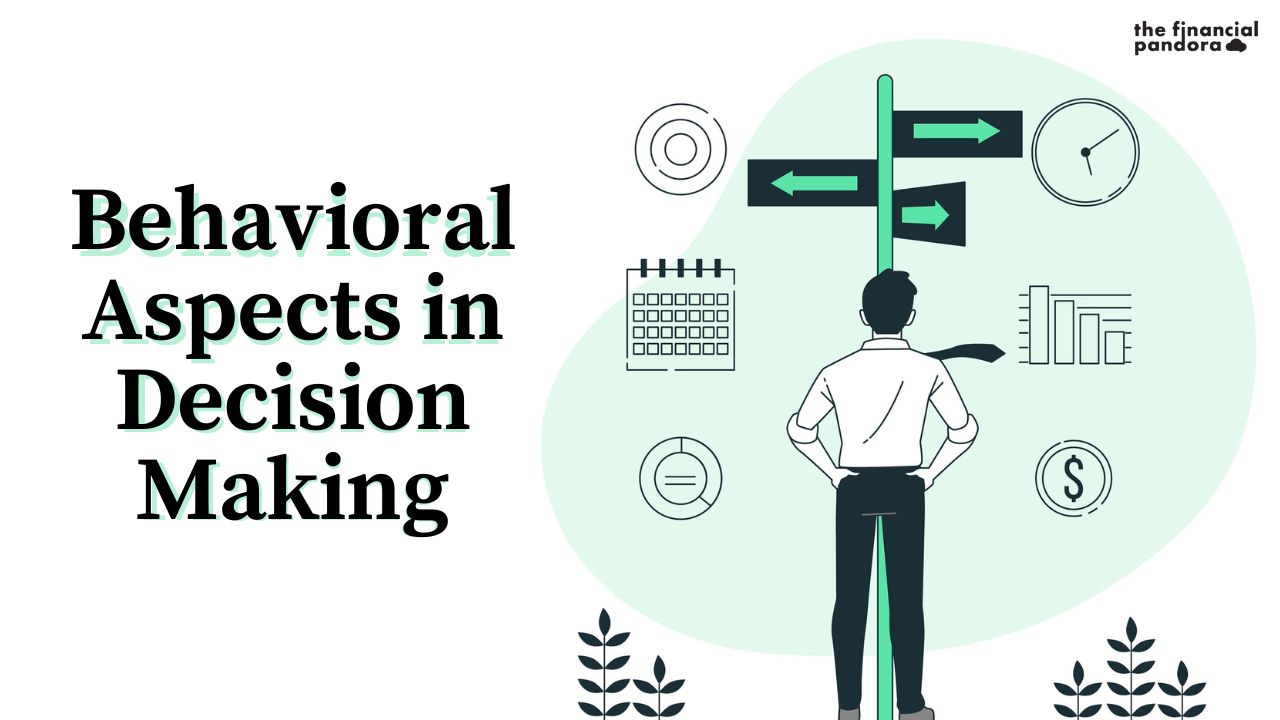On 30th May, 2020, the whole of India heaved a sigh of relief when the government announced ‘Unlock 1.0’, consisting of detailed guidelines of reopening the crippled economy and allowing movement of people across the country. People were frustrated as life came to a standstill, when Prime Minister Narendra Modi announced the world’s largest lockdown of 1.37 Bn people in India. In one of his video-conference addresses on March 25, Modi said, “The war in Mahabharat continued for 18 days, we have to win this war in 21 days. The entire country has to come together to fight against the threat of Coronavirus and we will definitely win this war,”
75 days have passed, but we haven’t won this war. There are still question marks over India’s lack of preparedness when this announcement was made. The total number of confirmed COVID-19 cases in India at the time of the announcement stood at 564 but currently nears 250,000, including close to 7,000 odd deaths at the time of writing.
Has this draconian lockdown achieved its objectives? Or has it failed drastically? To answer this, let’s consider these four parameters:
1. Ramping up of health infrastructure
It is an irrefutable fact that this pandemic has exposed India’s healthcare woes. This isn’t astonishing, because our health infrastructure is simply not equipped to handle a pandemic of this magnitude. As per the Organization for Economic Co-operation and Development (OECD) data of 2018, India’s spending on healthcare infrastructure is 3.6% of its GDP, which is significantly lower when compared to other countries. Developed countries such as the United States (16.9%), France (11.2%), Germany (11.2%) and Japan (10.9%) have invested more in developing their healthcare infrastructure. Rings an alarm, right?
The Health Ministry has reiterated that the lockdown has been utilized to ramp up the health infrastructure, amid certain question marks over the Centre’s management of the crisis. Let’s take a look at how infrastructure has been ramped up across India so far:
- 2362 dedicated COVID-19 health centers with 132,593 isolation beds
- 10,903 isolation beds and 45,562 oxygen supported beds
- 11,210 quarantine centers set up
- 7529 Covid care centers with 703,786 beds
- 28 crore N95 masks and 1.05 crore PPE kits to states and central institutions
- Daily manufacturing of 3L PPEs and N-95 masks by domestic manufacturers
Currently, India’s recovery rate is 48.2%, which has doubled from 24% at the end of April. Mortality rate is at 2.80%, which is lower than the global rate of 5.9%.
Although there have been instances of a few people unable to get a hospital bed or an ambulance on time, this ramp up could be a healthy success indicator. As India opens up gradually, we will continue to see a spike in the number of cases, but should be in a position to handle the situation.
2. Doubling rate and tests per million
A very encouraging point to note is that India’s doubling rate has improved from 3.4 days prior to the lockdown to 14 days today. Could this be a strong ‘success’ indicator? Probably not, since this rate is comparatively higher than in the US (35), UK (35), Russia (20), Spain (56), Italy (55) and Germany (54). Unfortunately, since the last week of May, daily new infections have been hovering around the 8,000-9,000 figure. There is a possibility of community transmission in the most affected states like Maharashtra, Tamil Nadu, and Delhi, which contribute to 58% of the total cases in India. Every other day, we come across headlines such as ‘India records the highest daily increase of X new cases and X deaths today’.
The total samples tested in India has crossed 45 lakhs. At ~3300 tests per million people, India also has one of the lowest testing rates in the world and ranks 140th in the world in terms of testing rate. At the beginning of the lockdown, this rate was significantly lower at 539 per million people. Currently sixth in terms of confirmed cases with such a low testing capacity, we can only wonder what the numbers would look like if we had the capacity or resources to test more people.
However, comparing this parameter of ‘tests per million’ with that of other countries isn’t totally justified, since, the population of the other largely affected countries, barring China, is significantly lower than India’s.

3. Averting lakhs of infections and deaths
Ever wondered what would happen if the lockdown was imposed late, or not at all? One word – Catastrophic.
Based on one study, the Government of India said that between 14-29 lakh cases and 37,000-78,000 deaths were averted in the first two phases of the lockdown. Other models by the Boston Consulting Group and Public Health Foundation of India estimated around 78,000-120,000 loss of lives. This number may seem improbable at first, but the lockdown has definitely helped to slow the pace of transmission in our country.
4. Negative economic outlook and the migrants tragedy:

India’s GDP growth has been declining since 2017-18 and the pandemic has made it more challenging to revive the economy. There were bound to be economic disruptions during the lockdown, but the impact appears to have been more severe than initially anticipated. Lakhs of jobs have been lost, many companies are struggling for survival, consumer sentiment is weak and our GDP growth for FY21 is likely to be negative due to disruptions caused by COVID-19. Over 50% of businesses in India have been significantly affected and the government is facing a massive loss of revenue. Moody’s Investor Service, for the first time in 22 years, downgraded India’s rating to ‘Baa3’ from ‘Baa2’, indicating a prolonged slowdown in growth caused by the economic disruption.
Lakhs of migrant workers have suddenly found themselves out of jobs since the lockdown was imposed and have returned to their villages. According to some surveys, the majority of the workers, who are daily wage earners, have not been paid by their employers since the lockdown began. When and how will they return to their workplace? Looks like the labour crisis could continue to hamper the economy for a substantial period of time.
The INR 20 lakh crore economic package announced by Finance Minister Nirmala Sitharaman will surely help in the revival, but only time will tell how long it will take before we see a positive outlook.
Conclusion:
The success or failure of the lockdown depends on what parameters one considers. Now, the responsibility for flattening the curve largely depends on the people residing in the most affected states and the strategy adopted by the respective state governments to tackle the situation. As more and more relaxations come into effect, we must not forget to continue practicing social distancing and wearing masks. Remember, the virus has not yet disappeared from our lives and the battle is yet to be won!
Liked the Article you just read? Show us your support by clicking that like button and sharing it with your friends! Also don’t forget to leave your thoughts about the article in the comment section below.
You can become a part of our mailing list by clicking here





Very nicely stated the facts of all parameters and keeping an open ended article is really great idea
As pandemic not yet over and lot is to achieved
Awaiting further part in future
On the eve of Unlock 1, the article conveys the facts nicely. It sets certain benchmarks for the immediate future to handle the yet unresolved Pandemic of epic proportions of the existing Generation. Would look forward to such repeat article after a couple of months into the Unlock mode.
Very well researched n put across without any specific bias Liked it
Do Ur best N All the Best
Will look forward for more of Ur articles